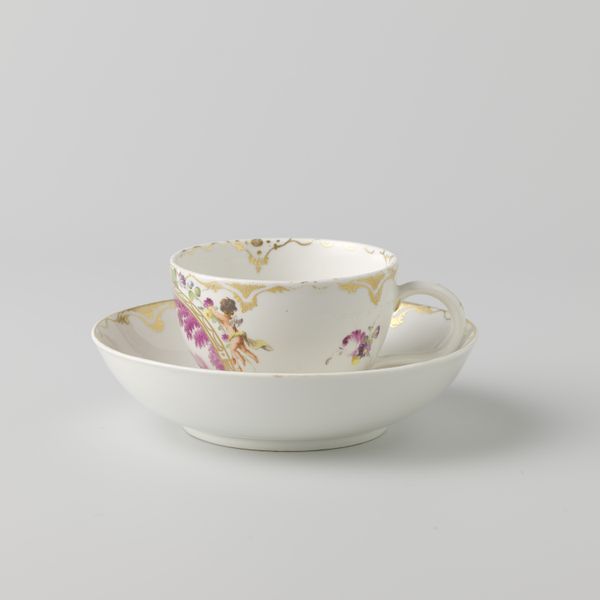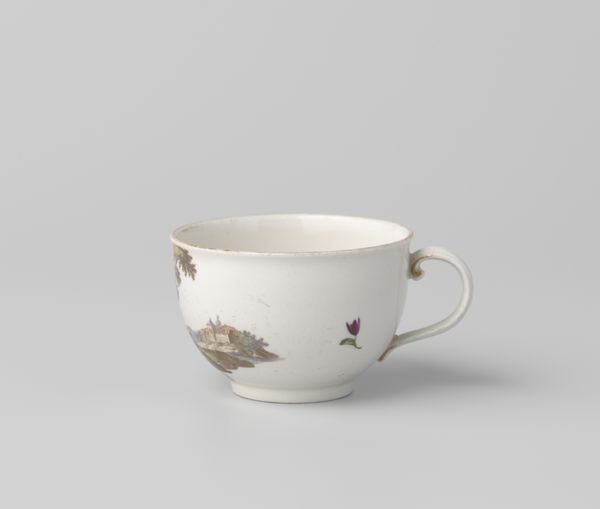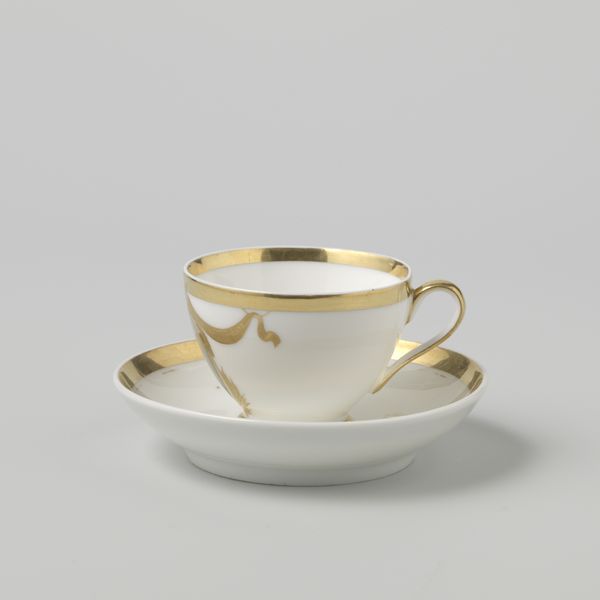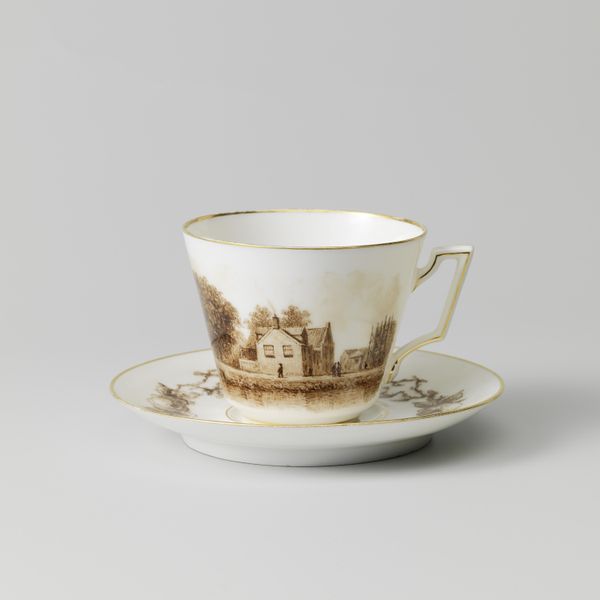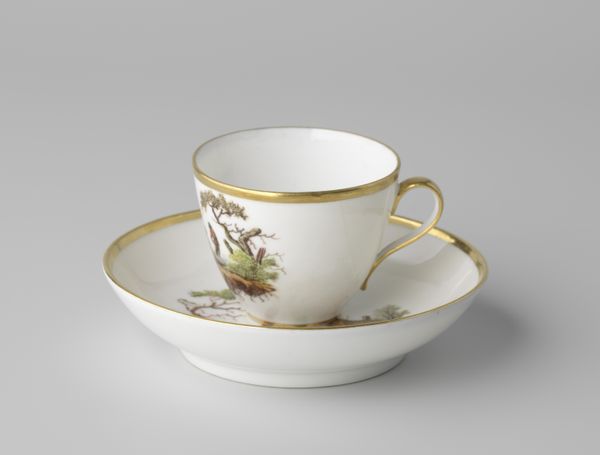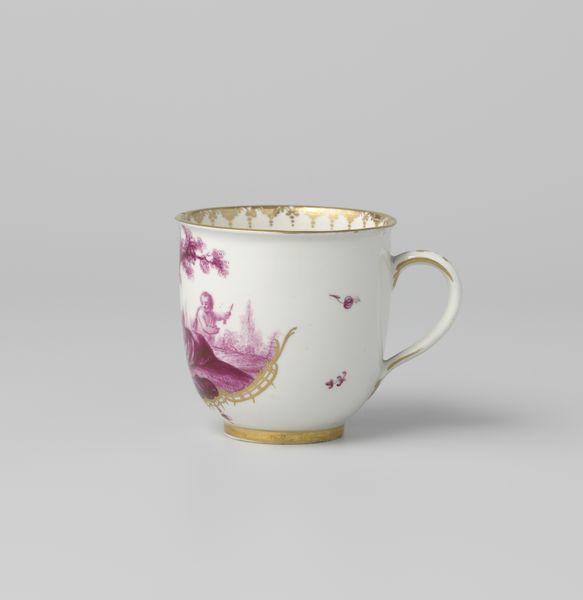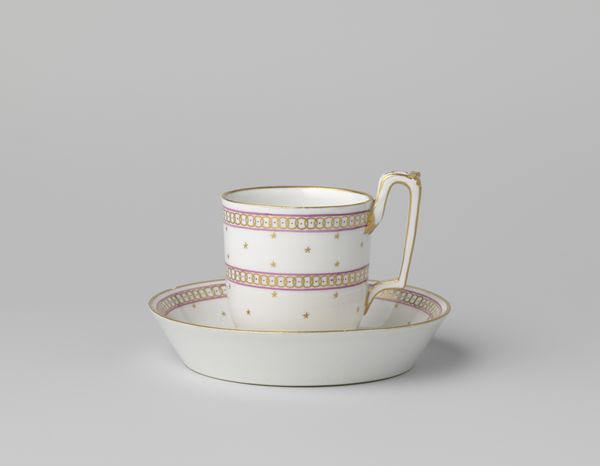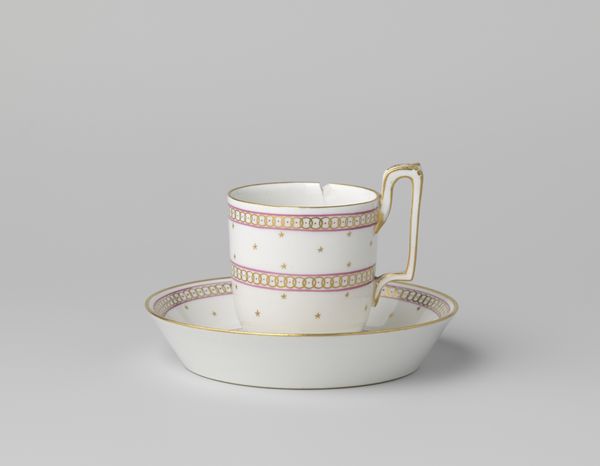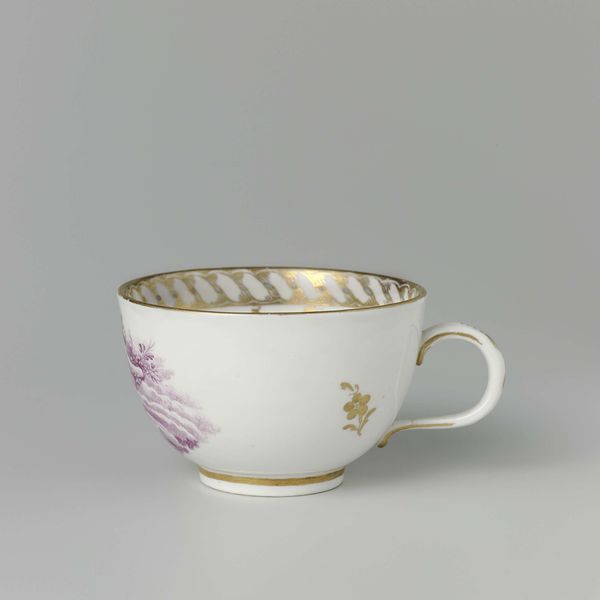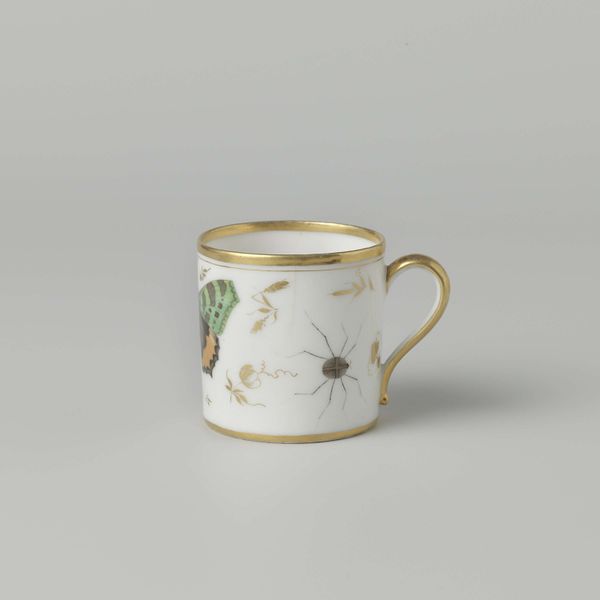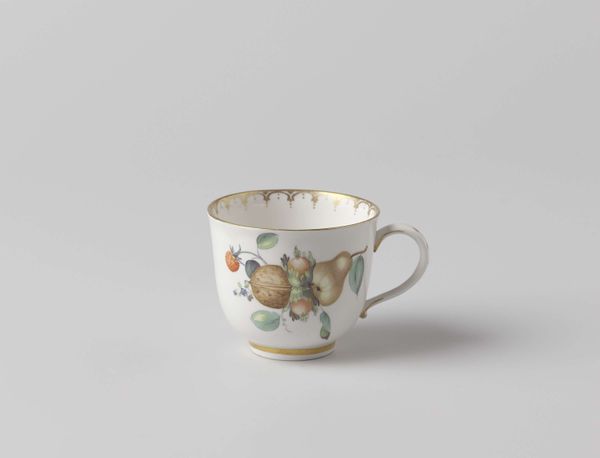
Dimensions: height 3 cm, diameter 13 cm
Copyright: Rijks Museum: Open Domain
This is a porcelain schotel, or saucer, with a putto, made by the Porseleinfabriek Den Haag. Here we see the influence of the Rococo style, a movement that dominated Europe in the 18th century. Rococo was characterized by its ornate designs and use of mythological figures, like the putto, or cherubic boy, seen here. But how did an Italianate style become so popular in the Netherlands? The answer lies in the growth of international trade and the desire of the Dutch elite to emulate the lifestyles of the French aristocracy. Porcelain, a luxury good, became a status symbol, and Dutch manufacturers like the Porseleinfabriek Den Haag sought to capitalize on this trend by producing wares that catered to the tastes of the wealthy. Historians might consult trade records and factory archives to understand the networks of exchange that enabled the production and consumption of such objects. By examining the social and economic context in which art is made, we can gain a deeper appreciation for its meaning and significance.
Comments
No comments
Be the first to comment and join the conversation on the ultimate creative platform.

